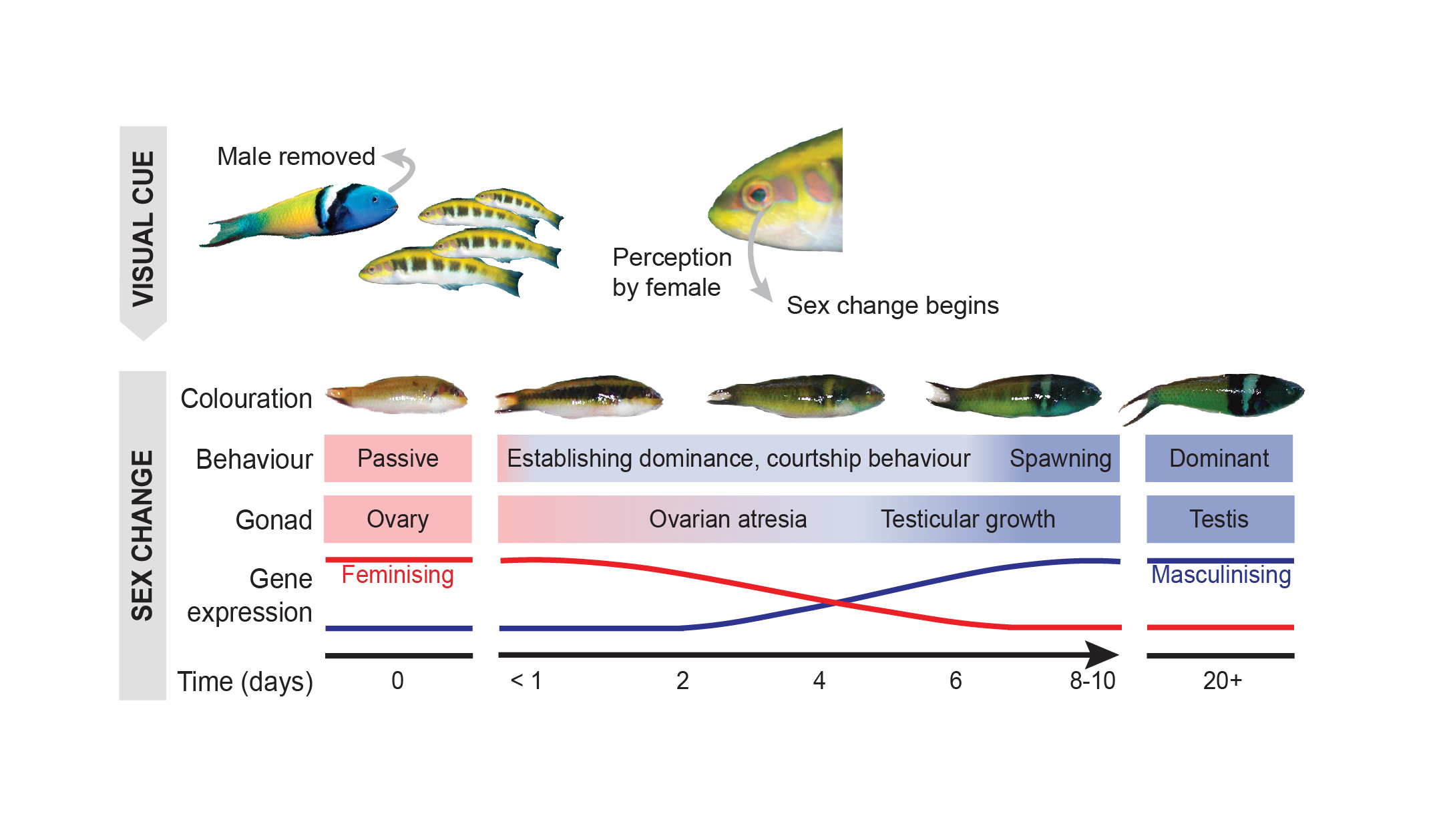Scientists Reveal Hidden Genetic Processes that Cause Sex Changes in Fish
Credit to Author: Becky Ferreira| Date: Wed, 10 Jul 2019 18:45:04 +0000
An extraordinary thing happens when a male bluehead wrasse, a type of small tropical fish, is removed from his harem of females. In his absence, the largest female morphs into the new dominant male over the course of about 10 days.
Scientists have now mapped out the intricate genetic changes that underpin this remarkable transition in the bluehead wrasse, which is one of about 500 fish species capable of sex changes as adults.
Co-led by Erica Todd, an ecologist at the University of Otago in New Zealand, a team induced sex changes in wild female wrasses off the coast of Florida by separating males from their harems. The team obtained samples of the wrasses’ gonads and brains throughout the transition process and examined them with RNA-sequencing and epigenetic analyses.
The results, published on Wednesday in Sciences Advances, shed light on the genes that determine the “sexual fate” of a wide variety of animals—including humans.
“Many genes important for sexual development in fish are also important in other animals,” Todd explained in an email. “Therefore, understanding how fish can change sex can tell us more about how these complex networks of genes evolved, and how they interact to determine and maintain sex, not only in fish but in vertebrate animals generally.”
The bluehead wrasse is a particularly interesting species to spotlight because its sex change is relatively swift, and is kicked off with visual cues.
When a male is removed, the largest female becomes more aggressive and simulates the blue head color of the male, indicating that she will undergo a sex change. Todd and her colleagues discovered that this initial phase was marked by an increase of the stress hormone cortisol, accompanied by a repression of aromatase enzymes, which are linked to estrogen production.

After these initial triggers, gene expression governing the wrasses’ gonads significantly shifted relative to the brain’s genetic expression. Ovaries morphed into sperm-producing testes, an “epigenetic reprogramming” that mirrors sex determination in early developmental mammalian cells.
“Our study confirms that sex change involves a chain reaction where genes important for female function are first steadily turned off, before the opposing male genes are progressively turned on,” Todd said. “In fish, it seems that external forces, such as stress, can more readily affect the balance of factors that maintain sexual fate.”
Some fish, such as gobies, can switch back and forth between sexes, but the bluehead wrasse tends to only transition from female to male.
“The benefits of sex change have a lot to do with body size,” Todd explained. “In highly social species like the bluehead wrasse, dominant males are only successful at breeding if they are large enough to defend a territory.”
As a result, if you are a bluehead wrasse looking to spread your genes as much as possible, it makes more sense to breed as a female while you are small, then switch to a male if you get big enough to defend a territory. As Todd puts it: “The best of both worlds!”
In addition to yielding insights into this truly ingenious mating strategy, the team hopes that the new study will encourage other scientists to probe the elaborate mechanisms that determine sex in vertebrates, which could lead to interdisciplinary applications.
“The remarkable speed at which a bluehead wrasse’s ovaries can be transformed into new testes may even eventually open up possible applications in tissue and organ engineering,” Todd said. “Furthermore, understanding sex change at a genetic level may also have benefits for aquaculture industries, as many fish of commercial value can also change sex.”
This article originally appeared on VICE US.